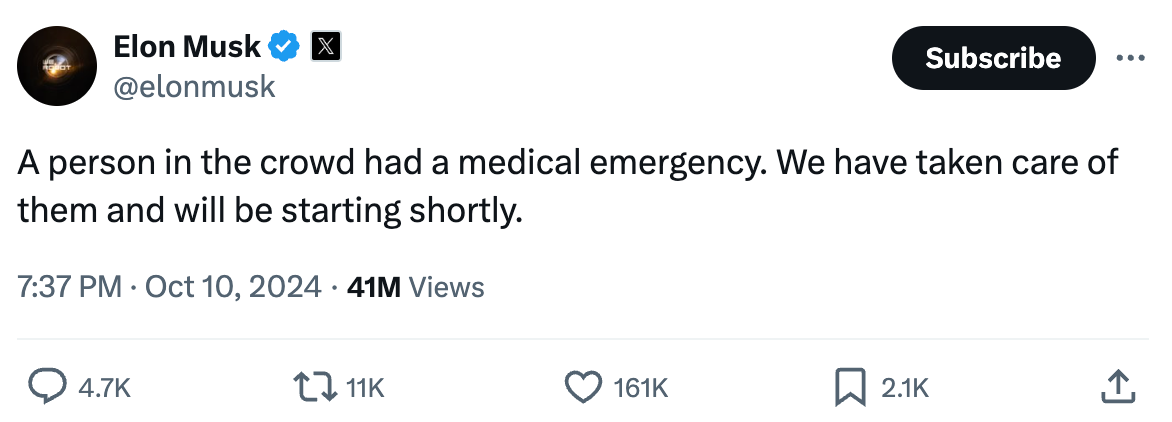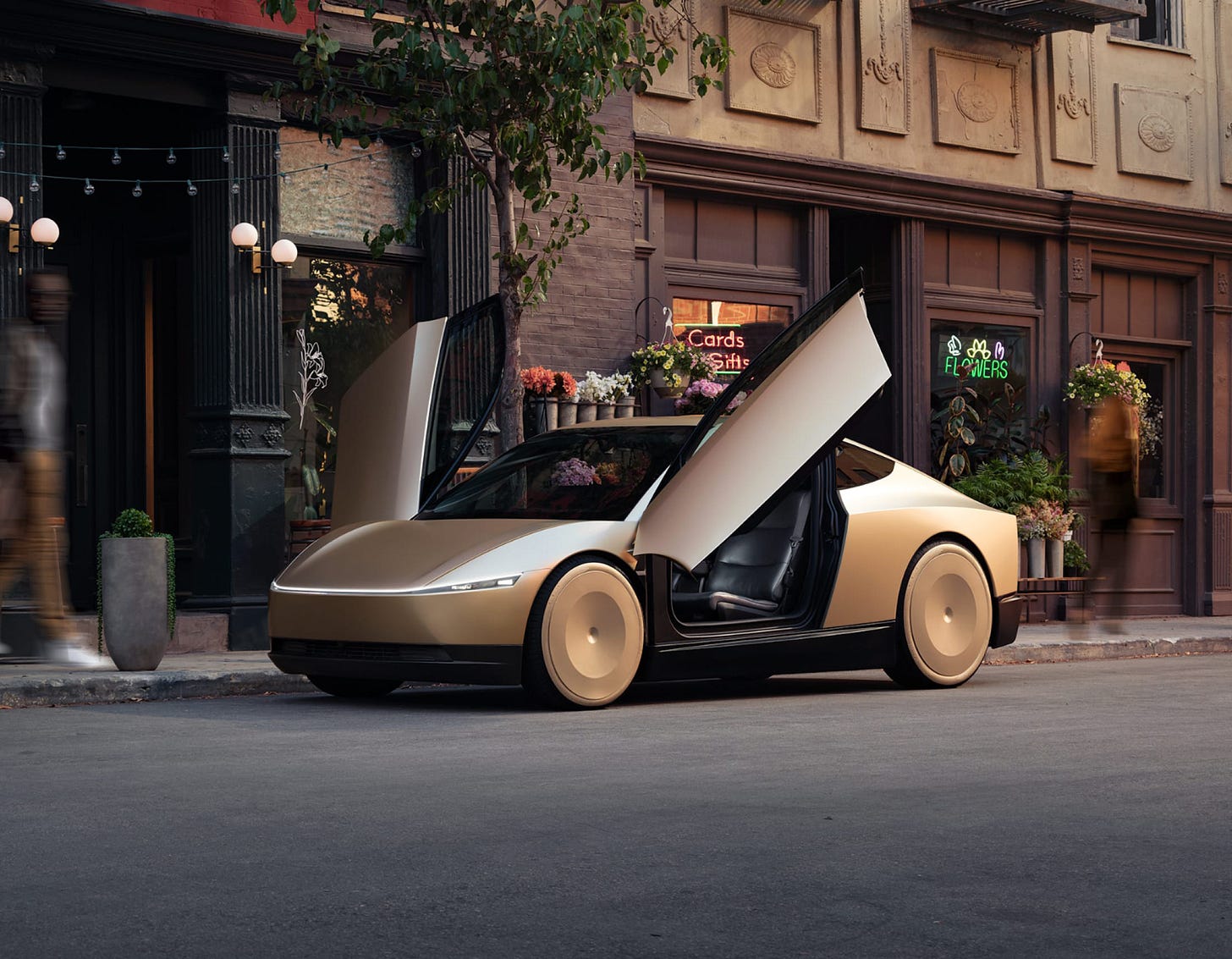After watching Tesla's robotaxi launch, I realized it only solved one problem
Tesla painted an ultra sci-fi future, but viewers questioned the event's impact as stocks plunged
Elon Musk took to social media to announce a delay in the highly-anticipated Tesla Robotaxi event, citing a medical emergency on site. From that moment on, things seemed a bit off.
According to Tesla's official schedule, the "Robotaxi Day" event was supposed to take place at Warner Bros. Studios in Burbank, California, on October 10th at 7:00 PM. The event's slogan was "We, Robot."
After almost an hour's delay, the event finally started. By that time, over 300,000 people were watching Tesla's livestream.
Three products, still a vision of the future
Musk arrived at the event in a Tesla Robotaxi, remarking that there were over 20 Robotaxis on site, each with no driver.
From a design perspective, the Tesla Robotaxi—dubbed the "Cybercab"—looked as sleek as expected. It took cues from the Cybertruck, featuring a futuristic, angular exterior. Inside, there were no steering wheels, pedals, or controls—just a single screen.
Tesla's flair for science-fiction-inspired design was clearly on display, and Musk summed it up succinctly: "The future should look like the future."
Just like that, many people expressed interest in buying one, even though the vehicles were far from production-ready.
Tesla unveiled three products at the event: the Cybercab, a driverless bus called the "Robovan," and the humanoid robot Optimus. Musk's description of these products was concise, with the overarching theme being, "Using technology to transform human life." Yet, without any substantial backing, many viewed these claims as merely grand promises.
Aside from its innovative design, Musk mentioned that the Cybercab would cost $0.20 per mile to operate, with taxes pushing the total to $0.30-0.40 per mile. The vehicle itself would be priced under $30,000, and Tesla aimed to begin mass production by 2026, at the latest by 2027.
The Robovan, designed for either 20 passengers or cargo transport, was expected to cost $0.05-0.10 per mile. The Optimus robot, which was showcased walking and performing basic movements, was projected to be priced at $20,000-30,000, with Musk saying it would eventually be capable of complex tasks—though this would require long-term optimization.
The three products may have looked cool, but the public seemed less captivated by the futuristic vision Tesla was trying to convey. Many viewers were left bewildered by the 30-minute presentation: Was this it?
The event was full of future promises, but it fell well short of the “historic” significance Tesla had previously promoted. Consequently, Tesla’s stock (TSLA.US) dropped 9% on Friday after the much-anticipated robotaxi presentation failed to meet investor expectations.
Robotaxi: when will Tesla close the loop?
Before the event, many expected Tesla to introduce not only new products but also more innovative production methods and affordable mass-market models. None of this materialized.
Musk did mention a new business model for Robotaxi—allowing one person to manage an entire fleet. However, this means there are numerous real-world operational challenges that must be addressed, such as maintaining vehicles without steering wheels and pedals, handling breakdowns, and determining when the Cybercab can actually achieve large-scale deployment.
Musk emphasized that the core technology enabling the market entry of driverless cars is Tesla's Full Self-Driving (FSD). He stated that fully unsupervised FSD would be rolled out in Texas and California next year. Before Robotaxis hit the streets, Tesla's Model 3 and Model Y would adopt this unsupervised FSD. But for this to happen, Tesla must negotiate with U.S. regulators and keep track of regulatory developments in other regions.
This means there are still numerous uncertainties before we can see fully unsupervised FSD on public roads.
Making autonomous driving more valuable
If this event was about the future of Tesla's Robotaxi, it was also about the future of autonomous driving as a whole.
Regarding the Cybercab's capabilities, Musk explained that Tesla would equip it with a next-gen AI computing system. With around 50 driving hours per week, there would be over 100 hours of idle time, which could be used for large-scale distributed inference. If there were a fleet of 100 million vehicles, each with a 1-kilowatt efficient inference computing capability, that would amount to an impressive 100 gigawatts of computing power. According to Musk, these idle resources shouldn't go to waste.
Musk said that utilizing idle computing power could make the future of autonomous driving more valuable—provided there are enough real-world scenarios for these vehicles to operate in.
Before Tesla launched its Robotaxi, the major question for the entire autonomous vehicle industry was: how do we get enough driverless cars on the road? Both Baidu's Apollo program and Waymo in the U.S. have been tackling this issue, and after years of effort, Baidu is even starting to enter international markets.
Though Tesla showcased its prowess in design and autonomous driving technology, it failed to present a groundbreaking solution in the AV field. The three products Tesla launched still stayed well within its comfort zone.
Ultimately, Tesla may have solved one product-level issue, but that alone fell short of meeting the public's high expectations for this event.








